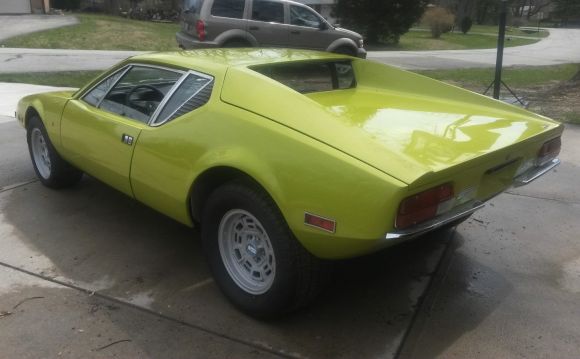Would you tell me the color code please, what kind of paint was used
color is the light green

and then, do you have any informations for chassis 2659 ?
regards
Philippe
Replies sorted oldest to newest
quote:Originally posted by ND4SPD:
looks good! what color and paint brand did you use to paint the rims. Also, what brand and size of tires are those?
quote:Originally posted by No Quarter:
Hi Philippe
I don't know if anybody have any special advice for this exact intake on this exact block. My experience with Chevys and Fords and Marine engines is that if you use the end seals and on top of them give a thick line of RTV, it never leaks again. How thick must be dermined by trial fit of intake manifold. Good luck
quote:Originally posted by No Quarter:
Philippe, can you get your valve covers off? To adjust lifters with engine running maybe? And can the lid close?
Looks good for sure...
quote:Originally posted by Bosswrench:
72GT, what you have is a front-engine intake manifold on the engine as shown. Front engine cars have their engines mounted on a slant for various reasons. Pantera engines are mounted horizontal and use an intake cast that way. You can run a tilted intake in your street Pantera, but you will have to carefully adjust the front & rear carb floats for proper mixture. If you have the carb pad milled flat, float adjustment is simpler but you will also have to redrill the 4 mounting screws to the new carb angle or they may loosen, bend, or break over time.
A cheaper alternative is an angled spacer rather than milling, but the redrilling still needs to be done relative to the new angle of the carb on top. And it increases the height of the carb by the spacer thickness, which will interrupt rearward vision a bit more, which some find objectionable. Finally, on an open plenum intake as shown, the engine may actually run a little stronger with such a spacer.... or not. It depends on your cam and a host of other things. Spacers are cheap and they need not be metal- try one and see how the engine acts. A spacer can also be run on a flat intake. Good luck.